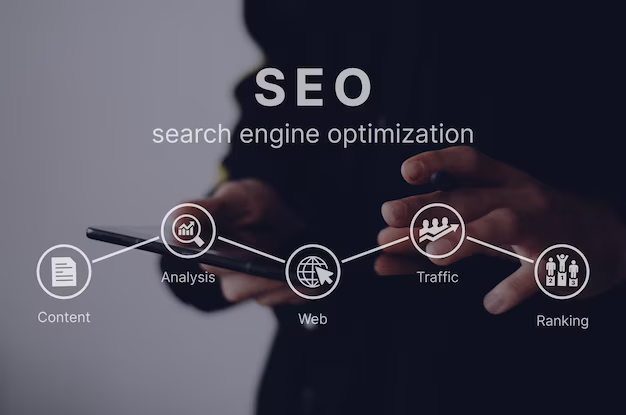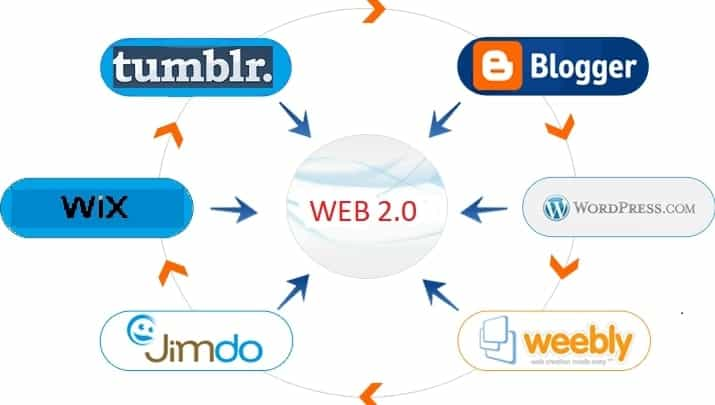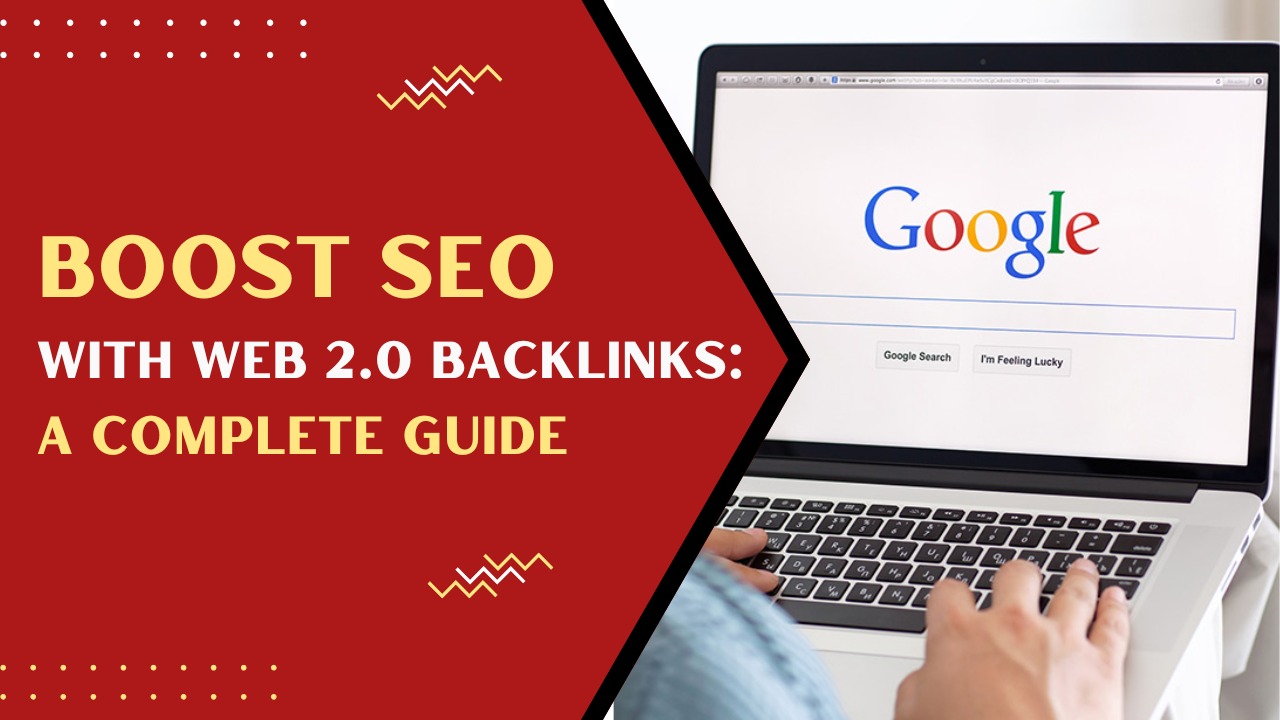Backlinks play a vital role in search engine optimization (SEO) by helping improve a website’s ranking in search engine results pages (SERPs). With Google continuously refining its algorithms, the importance of the quality and type of backlinks has grown. Among these, Web 2.0 backlinks have gained significant attention due to their effectiveness in boosting SEO.
Web 2.0 backlinks are unique in that they come from content created on platforms that allow users to publish their own content, like blogs or social media sites. These platforms often allow for easy creation and linking of high-quality content, which is valuable for SEO purposes.
Using Web 2.0 backlinks can improve a website’s search engine ranking by driving organic traffic, increasing domain authority, and building a network of relevant links. When done correctly, Web 2.0 backlinks can be a powerful tool in enhancing a website’s SEO and overall visibility in search engine results.

What is Web 2.0 ?
Before exploring Web 2.0 backlinks, it’s crucial to understand what Web 2.0 means. In simple terms, Web 2.0 refers to the transition from the early, static internet (Web 1.0) to a more interactive and dynamic version of the web. This shift, which began around the early 2000s, introduced features that allowed users to actively engage with content and contribute to the online experience.
Unlike Web 1.0, which mainly consisted of static pages with limited interaction, Web 2.0 emphasizes user-generated content. This includes platforms such as social media networks, blogs, wikis, and video-sharing sites, where users can create, share, and interact with content in real-time.
The rise of Web 2.0 marked a significant change in how the internet functions. It made the web more accessible and engaging for everyday users, allowing them to shape content, form communities, and connect globally.
As a result, Web 2.0 has become integral to SEO, as it encourages content creation and sharing, which are crucial for building backlinks and improving search engine rankings.
Key Characteristics of Web 2.0:
Interactive Content: Web 2.0 focuses on the creation of interactive content such as blogs, social media posts, forums, and videos that are not just consumed but also created and shared by users.
Collaboration and Social Networking: The rise of social media platforms such as Facebook, Twitter, and Instagram helped fuel the growth of Web 2.0.
User-Generated Content: Websites like YouTube, Wikipedia, and Medium allow users to create and contribute content.
Enhanced User Experience: Websites are made to be more intuitive, engaging, and responsive to user input.
In a broader sense, Web 2.0 represents the shift from a static web (where users were primarily consumers) to a more dynamic web where users are active participants in content creation and sharing.
What are Web 2.0 Backlinks ?
A Web 2.0 backlink is a hyperlink that comes from a Web 2.0 platform, which are websites that allow users to create, manage, and share content. These platforms provide users with the tools to publish blogs, articles, and multimedia posts easily.
Some well-known Web 2.0 platforms include WordPress, Blogger, Tumblr, Medium, and Weebly. These sites enable individuals to create personal or professional content and share it with a broad audience.
Backlinks from these platforms are valuable for SEO because they often come from high-authority, user-generated content sites. When used correctly, Web 2.0 backlinks can significantly boost a website’s search engine ranking by increasing visibility and driving organic traffic.
These backlinks are generally do-follow (meaning they pass SEO value to your site) and are considered valuable for a number of reasons:
User-Generated Content: Web 2.0 platforms are unique because they allow users to post and link to their content, which gives these backlinks a level of authority that traditional directory links may not have. Since the content is generated by real users and often focuses on topics relevant to the audience, these links are perceived as more authentic and valuable by search engines.
High Domain Authority: Many Web 2.0 platforms, such as WordPress or Tumblr, boast high domain authority (DA) due to their widespread popularity and active user engagement. This high DA means that a backlink from such a platform can pass a significant amount of SEO value to your website, potentially improving your site’s ranking in search engine results.
Control Over Content: One of the key advantages of using Web 2.0 platforms for link-building is the control you have over the content. You can create posts, articles, and blogs that include backlinks to your website. This ability to directly influence where and how your backlinks are placed makes Web 2.0 backlinks especially appealing to SEO professionals looking to improve their website’s visibility.
How Web 2.0 Backlinks Help with SEO Results ?
Web 2.0 backlinks are an effective SEO strategy for several reasons. Here’s how they can benefit your SEO efforts:

Improved Search Engine Rankings
One of the most significant benefits of Web 2.0 backlinks is their ability to boost your website’s search engine rankings. Google and other search engines view backlinks as a signal of credibility and relevance. When a trusted Web 2.0 platform links to your site, it acts as a “vote of confidence,” suggesting that your content is valuable and authoritative. As a result, search engines are more likely to rank your website higher in their results pages, leading to increased visibility and organic traffic.
These backlinks are particularly effective because Web 2.0 platforms often feature high-quality, user-generated content. Since these sites are highly frequented by users, Google perceives them as reliable sources of information, making any backlinks from them more powerful in terms of boosting SEO.
Increased Domain Authority
Many Web 2.0 platforms have high domain authority (DA), which can directly benefit your website’s SEO efforts. Domain authority is a metric that reflects the strength and credibility of a website in the eyes of search engines. A backlink from a high DA platform like WordPress, Medium, or Tumblr signals to Google that your website is linked to a trusted and authoritative site, which can improve your own site’s DA.
With higher domain authority, your website is more likely to rank higher in search results. This is because search engines prioritize authoritative websites, believing they provide reliable and relevant content. By gaining backlinks from such reputable platforms, you give your website a better chance to compete in search rankings.
Enhanced Trustworthiness
Web 2.0 platforms are known for their credibility and trustworthiness with search engines. These sites typically have strict content guidelines and are populated by large, engaged user bases, which is why search engines trust them. When your website receives a backlink from one of these trusted platforms, it sends a positive signal to Google about your site’s credibility.
As a result, your website gains trust in the eyes of both search engines and users. Backlinks from Web 2.0 platforms not only improve your rankings but also enhance the overall perception of your website as a reliable and authoritative source of information, which is essential for long-term SEO success.
Long-Term Results
Web 2.0 backlinks tend to provide long-lasting SEO benefits. Unlike certain other types of backlinks that can easily be removed or devalued by search engines, Web 2.0 links are often more stable and enduring. Once you secure a backlink from a trusted Web 2.0 platform, it is likely to remain active and relevant over time, continuing to deliver SEO value.
These backlinks help establish a strong foundation for your website’s SEO strategy. Over time, they can contribute to sustained improvements in search engine rankings, making them an excellent long-term investment for anyone looking to strengthen their website’s online presence.
How Do I Submit a Web 2.0 Submission Sites List?
To take advantage of Web 2.0 backlinks, you’ll need to know how to submit your website to Web 2.0 platforms. Here’s a step-by-step guide on how to submit your website to Web 2.0 submission sites.
Choose the Right Web 2.0 Platforms

Not all Web 2.0 sites are created equal, so it’s important to choose platforms with high domain authority and a solid reputation. Some popular Web 2.0 platforms include:
WordPress.com: One of the most well-known blogging platforms, it allows users to create blogs and link to external websites.
Blogger: Owned by Google, Blogger is a popular platform for creating blogs and posting content with backlinks.
Tumblr: Known for its microblogging capabilities, Tumblr also allows users to post links back to their websites.
Medium: A well-established platform for publishing long-form content.
Weebly: A website builder that offers blogging features and allows for backlink creation.
Wix: Another popular website builder that allows users to create pages and add backlinks.
Make sure to focus on high-authority Web 2.0 platforms to maximize the SEO benefits.
Sign Up for an Account
The first step in submitting a Web 2.0 backlink is to sign up for an account on the platform of your choice. Most Web 2.0 platforms require users to create an account before they can publish content.
Create High-Quality Content
Once you have signed up, the next step is to create high-quality, engaging content. This can be in the form of articles, blog posts, or even multimedia content like videos and images. Be sure to naturally incorporate backlinks to your website within the content. The more informative, original, and valuable your content is, the more likely it will be shared or linked to by others, providing added SEO value.
Add Relevant Backlinks
When creating content, it’s crucial to ensure that your backlinks are relevant to the content you’re posting. A link in a blog post about technology should link to a tech-related website, for example. Avoid keyword-stuffing or over-optimizing anchor text, as Google may penalize such tactics.
Publish and Promote the Content
After creating and reviewing your content, publish it on the Web 2.0 platform. Once your content is live, promote it through social media channels or other platforms to increase traffic and visibility.
Monitor the Results
Once your Web 2.0 backlink is live, monitor its impact on your SEO performance. Use tools like Google Analytics and Google Search Console to track changes in traffic, rankings, and backlink performance.
How to Get SEO Results from Web 2.0 Backlinks
Getting the most out of your Web 2.0 backlinks requires more than just submitting content and hoping for the best. Here are some best practices to maximize the SEO results from Web 2.0 backlinks:
Focus on Quality Over Quantity
For Web 2.0 backlinks, focus on quality rather than quantity. A few high-quality backlinks from trusted platforms are much more valuable than numerous links from low-authority sites. Quality links from authoritative sources improve SEO and drive more organic traffic.
Diversify Anchor Text
Vary the anchor text used for your Web 2.0 backlinks to keep them natural. Repeating the same anchor text can look spammy. By using diverse keywords or phrases, your backlink profile appears more organic, which search engines prefer.
Create Evergreen Content
Create evergreen content that stays relevant over time. This content, like tutorials or how-to guides, continues to generate backlinks and SEO benefits long after it’s published. Evergreen content ensures your Web 2.0 backlinks remain valuable.
Engage with Your Audience
Engaging with your audience on Web 2.0 platforms helps build trust and authority. Respond to comments and questions to show that your content is active and valuable, which can lead to more backlinks and better SEO.
Maintain Consistency
Keep your Web 2.0 profiles updated with fresh content regularly. Consistent posting helps maintain visibility and SEO performance by signaling to search engines that your content is relevant and actively maintained.
Avoid Spammy Practices
Avoid spammy link-building practices like link farming or creating low-quality content for backlinks. Focus on producing valuable, high-quality content that naturally attracts backlinks, which is more effective and sustainable for SEO.
Here is the Top: Web 2.0 Submission Sites List
Conclusion
Web 2.0 backlinks are an effective and valuable tool for enhancing your website’s SEO. By leveraging user-generated content platforms like WordPress, Tumblr, and Medium, you can gain high-quality, authoritative backlinks that contribute significantly to your website’s rankings.
However, to achieve the best results, it’s crucial to focus on creating high-quality, relevant content. Quality always trumps quantity when it comes to backlinks, so choose platforms with strong domain authority and ensure your content adds value to the audience.
Finally, consistency and natural link-building strategies are key. Avoid spammy practices and focus on building a diverse and trustworthy backlink profile. By following these best practices, Web 2.0 backlinks can be a powerful tool in boosting your website’s SEO and online visibility.

